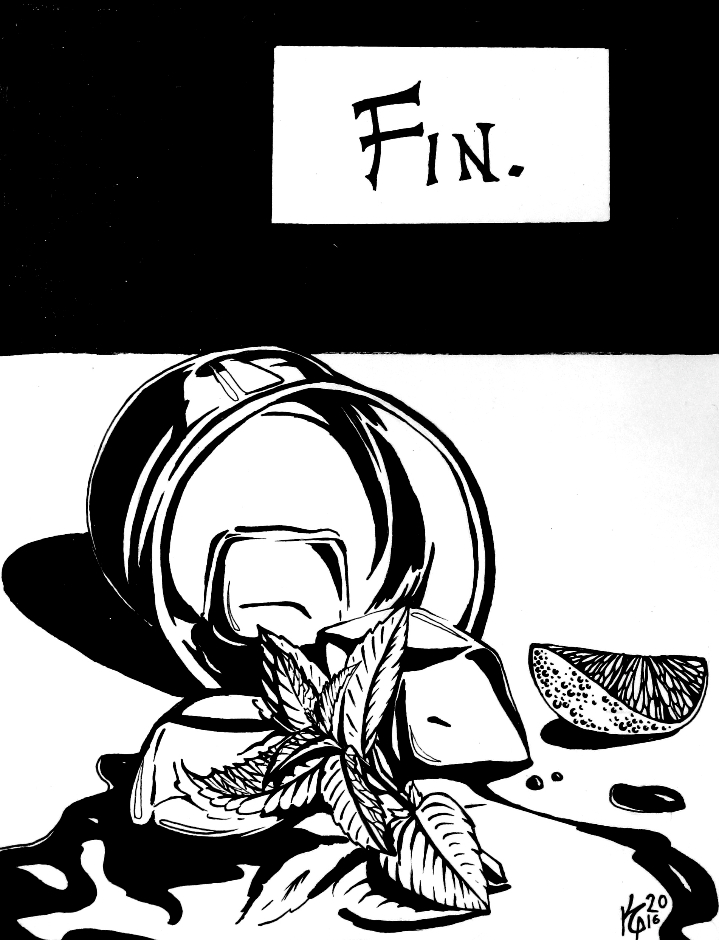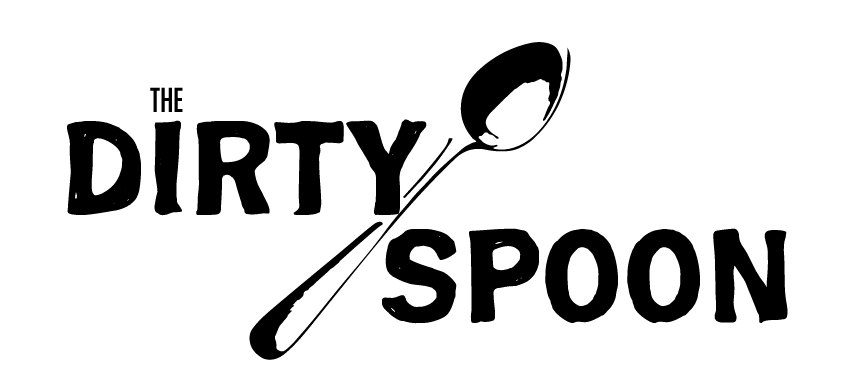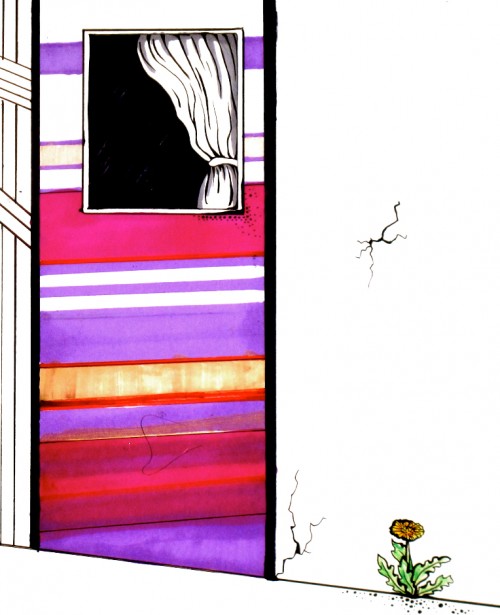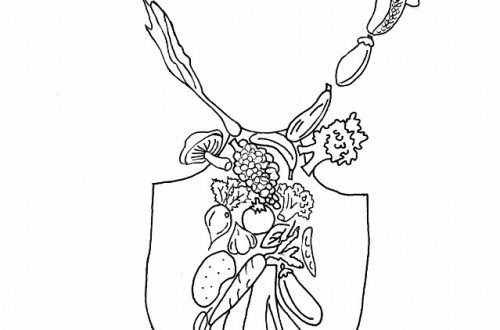by Jonathan Ammons
The conclusion of Dirty Spoon Miami aired on The Dirty Spoon Radio Hour on June 7, 2019.
This is our 4th and final installment of our multi-part series, Dirty Spoon does Miami. Click here to read Part 1, Part 2 and Part 3.
The server is looking at me with disdain.
“I’ll definitely start with a Mojito. Can you believe I’ve been in Miami all this time and not had a Mojito? I usually never drink them, but what the hell, when in Rome, right? And what did you want, Suzi? You wanted a glass of the red, right? And can I also get a Campari and soda? I forget you can order multiple drinks at a time in Florida, it’s not like the control states in the Bible Belt… and I’m sure we’ll order a lot more when you get back with those cocktails! Thank you!”
Back at Versailles and I am talking at Mach 5, as though my mouth has broken the sound barrier and is moving faster than the speed of my brain. Surely I am slurring. I’m not used to this strange and magical combination of uppers and depressants. Too many little cups of those velvety black caffeine bombs mixed with too many rums, tequilas, and gins. Too many rounds at Mac’s again–those heavy hands sneak up on you–before stumbling across the street for an overpriced cafecito.
It is with great urgency that I must warn you of the price discrepancy in Cuban coffee. In Little Havana you will never pay more than $0.75 for a mini-mug full of espresso. But as soon as you cross the bridge over that gorgeous blue water, with Gantry Cranes towering as high as the skyscrapers, after you wade through the traffic, wrestle for over-priced parking and finally find your way to a Cuban-owned bodega with an espresso machine, you pay upwards of $2 for a tiny plastic thimble full of sugar and coffee.
But then again, everything in South Beach seems to be a racket of some sort.
By the time the drinks arrive, I’m still roaring. “Do you know what you want? I still can’t decide, you go ahead.”
“I’ll just have a tamale. Suddenly I’m not all that hungry.” Suzi whispers. She’s as ripped as I am by now and harboring it in a very different way. While I am leaning over and interrupting the dinner of strangers, drawing the ire of every server in the room, she is shyly and quietly huddled in her chair, almost disappearing into it, and staring into her glass of wine. I feel bad because she was so excited about the Mahi Mahi, the snapper, the shrimp, and I fear I may have pushed her over the edge starting us out with pre-beach, pre-lunch shots and beers at Macs.
“That’s all you want? Okay, you’re welcome to have some of mine, because I’m pretty sure I’m going to order everything I can’t make my mind up between.” The server begins brushing his thick black mustache with his pen and looking at me over the rim of his glasses with the tattered veneer of tolerance.
I continue, “Can I get a side of fufu, and let’s get this Criolo Sampler to start with, and maybe some of this white bean soup, and let’s try that Imperial Rice, I’ve always heard about Imperial Rice and never had it! Oh, and how’s this Andalusian Pigs Feet? Do you think that would be too much?”
He slowly shakes his head to indicate that I have made some kind of error and it occurs to me that he might just be sizing up our table and realizing I’ve already ordered more than can possibly fit on the small two-seater. This has been a habit of mine. At Chez les Bebe I ordered enough to feed us for the entire trip. Thank God they put us back here in the far corner of the sprawling restaurant.
“Okay… I don’t need the Pigs Feet… let’s just stick with everything else.”
He reads the order back slowly, the way a judge might read a list of charges.
“I’m not paying for all that!” Suzi says defensively. By now her arms are crossed and she looks mad. “We leave tomorrow! What the hell are we going to do with all that food?”
“You got the last meal, I’m paying for this one! We can leave it for our hosts!” I suggest, knowing that I am losing this battle.
“They’re vegan!”
“Look.” I use my most conciliatory and diplomatic tone, but I’m afraid that like most times I open my mouth when I’m not getting my way, it will sound condescending. “I have never had the chance to try any of these dishes, and while I wish we had a table of four friends to split this all with, we don’t. So I’m just going to order it all and hope for the best.”
She glares at me.
“That will be all! Thank you!” I say to the waiter with a massive fake smile. Incredulous, he evaporates into the fray.
It’s been a really, really, really long day.
I have always prided myself on being able to sleep through anything, and almost anywhere. But roosters sound really angry in the morning, and turkeys sound like something out of a horror movie when their rasp wakes you from a deep rem cycle. So I have been wide awake since six AM, and for the majority of the trip I’ve averaged about four hours of sleep. I’m pretty sure Suzi could sleep through a car bomb in the driveway.
The City of Midlife Crises
We began the day with a foray into Miami Beach. Perhaps the last place in Miami I really wanted to see.
When I think “Miami Beach,” all I can picture is a blinking neon sign boasting: The City of the Midlife Crisis. Yellow Ferrari convertibles, guys walking around in $100 t-shirts, girls in six-inch heels and fake breasts. Hair gel. Shitloads of hair gel. In other words: not my kind of scene.
The settlement of the island began in the late 1800’s as a massive avocado farm with canals dug to help transport the harvest. Ironically, when John C. Collins’ crop venture failed, he became a developer instead of a farmer. By the nineteen-teens, Collins began a behemoth project, the construction of the Collins Bridge: an insane two and a half-mile wooden bridge that would cross the Biscayne Bay, the largest of its day. But when Collins ran out of money, his fellow developer, Carl Fisher, stepped in and funded the completion of the project. The bridge was later replaced by what is now the Venetian Causeway, a strange series of bridges that pass through picturesque man-made residential islands.
Carl Fisher had himself been building like mad on the island, erecting hotels such as the Flamingo to attract wealthy winter vacationers fleeing the chilly winds of New York City. And who in their right minds in 1925 wouldn’t want to travel to an exotic new island to see one of America’s first Speedboat Regattas? Or be served cocktails at your fancy hotels by curvy bathing-suit-clad roller skating waitresses? But who could have predicted the devastating hurricane that would wipe entire swaths of the island clean of any standing buildings, killing more than 300, and doing more than 100 billion modern-day dollars worth of damage? Neatly timed too, with just enough space before the Great Depression to rebuild the island as the metropolis of lore.
By the 30’s, the hotels had been scaled back to smaller spaces to accommodate the lesser influx of tourists due to the financial crisis. Architects like Henry Hohauser and Murray Dixon left their marks on the island with simple, elegant and progressive art deco structures that looked unlike any other place in the country.
On our way to the beach, we stopped for lunch at a spot a friend had given me a tip about. Bella Cuba is a tourist minded sampling of Cuban cuisine.
Surprisingly moderately priced considering its location, the food was… meh. Nothing popped, nothing sang. Still craving a real Cuban sandwich since I’d landed in Miami, I was really looking forward to it. Perhaps all that expectation left me feeling deflated when I finally sat down to a thin, slightly stale, and mostly flavorless offering. Suzi went with a tamale and a side of yucca fries. She totally out-ordered me, and by now I was starting to think that Suzi might be a little better at this travel-eating thing than me.
Even stranger was the beer. Hatuey was a “Cuban Style Beer” as it said on the label, where it also tells you that it is made in Greenville, South Carolina. It is manufactured by Bacardi and for some reason has sulfites added, which seems a tad unnecessary for a pale ale.
After lunch, it was time for a stroll through the Miami Beach Botanical Gardens, designed by the aptly named Raymond Jungles. Suzi is a plant person. Her entire house is surrounded by massive exotic plants that seem to be bursting with life. I am not a plant person. My best friend still gives me shit for killing the Christmas cactus she bought me for my birthday in under a year. I admittedly know little to nothing about plants, particularly the ones I cannot eat.
You can’t help but marvel at what you get to see in a botanical garden in a tropical climate. Massive blooms from alien looking flowers that stick out like tongues from sharp leaves. Sweeping contrasts of outlandish colors, dark greens and neon pinks and yellows, deep blues and purples. Foreign palm trees with armor-like bark and long tails that sway in the breeze. Towering ficus trees that drape Spanish moss the way a woman might a long scarf. And strange figs that bear their fruit from the trunk rather than the branches.
We stopped to feed the fish before finally heading back to Mac’s Club Deuce for a pre-beach round of cocktails and to get our poker chips for a free round when we are done roasting under the hot Miami sun. But by the time we got to the beach, it was chilly and breezy, and we just decided to go back to the bar.
Mac’s was different the second time around.
Earlier it had been deserted and silent, with not much of an early afternoon crowd, only the buzzing of the neon. But our second time in, it was dusted with regulars. Older gentlemen in pearl button shirts and dress pants. The sweeping strings of Cachao’s “Rhapsody in Blue” washed through the speakers of the jukebox, giving the scene a throwback, and almost Tarantino-esque feel. Because of the camel hump shaped bar, guests are forced to face each other and thus converse. It’s a quaint place. It’s a friendly place. It is a happy place.
After Mac’s, we went to find caffeine. On the street a man stopped to bum a cigarette from Suzi where she was sitting on the stoop smoking, and I could tell from the first words out of his mouth that he was exactly what I dreaded running into. The post-midlife-crisis douchebag. The kind you imagine has left a family at some point in a flaming red Porsche, his bald patch glistening in the sunshine as he drives off with some girl half his age, only to max out his credit cards and wind up relegated to rooming with a friend at 49, in debt up to his eyeballs and still dressing like he’s 23, an Italian in a flat billed cap and cargo shorts.
“Yeah, I’m in the entertainment business,” he told us. “I take people to clubs and show them a good time and they pay me for it.” I have no way of verifying if this is true, but I cannot imagine anyone paying good money to hang out with this emaciated, mop-headed jersey boy. But then again, it is Miami.
If you do find yourself in Miami Beach in search of something other than dance clubs slinging high priced bottle service, if you want to avoid Kardashian-like drivel while still absorbing the culture and the spirit of the neighborhood, or if you simply forgot your eight-inch hooker-heels, look no further than the Broken Shaker.
Pass through the beautifully antiquated lobby of the once opulent Indian Creek Hotel — now the hipster hostel Freehand — head towards the pool and bear left. There, behind the wide roll-away doors is a cocktail lover’s haven. What began as a pop-up bar earned its permanent location in 2012, and what resulted was something that even the James Beard awards recognized as a bar not to miss.
Elad Zvi, and Gabriel Orta opened the Broken Shaker in the hopes of creating something approachable in Miami Beach; a step up from the dinge of the dive bars we’d been enjoying, but something not nearly as gaudy and atrocious as the high end club scene that had become commonplace on the island.
As Zvi told Miami.com, “Handcrafted cocktails are not as accessible as they should be. It’s almost impossible to find a good drink for $11 on Miami Beach.”
If you, like me, almost spit out your drink at that number –careful now, that’s an expensive spit-take for 2012– you are not alone.
Miami, much like Vegas, is insane.
It is the kind of place where thirty-somethings willingly hand their credit cards to women in short black skirts to enter glossy clubs, pay $50 to get in the door to hear a DJ whose name they won’t even recall in the morning, and spend an average of $350 for a bottle of Grey Goose vodka — the most boring liquor in the world — that would cost them around $30 at the liquor store. Did I mention that an automatic 20% gratuity is also added for that bottle service? I have yet to see how being fucked in the wallet by a business that tells you explicitly that it is their expressed goal is “fun,” but then again, I also didn’t do three lines of cocaine before heading out for a night on the town, either. I’m here to relax, not burn calories.
As the sun set on the enclosed courtyard, we took our cocktails and reclined on the lounge chairs by the pool but still overlooking the garden that takes up the Western part of the courtyard. Candles and tiki torches were set alight. and there was a shift in the crowd. In the cool of the evening, sportcoats appeared on shoulders. Sundresses gave way to longer, flowing fabrics.
In my glass: Monroe’s Garden. It’s a blend of Olmeca Altos Tequila, Aperol, radish, celery, fennel, cumin, and citrus. For so many savory flavors, it was surprisingly refreshing and delicate. Suzi opted for the Lampshades on Fire. Bombay Gin which she swapped out for St. George, Vya Dry Vermouth, “garden brine,” sherry, apricot, and bitters.
They also have a pretty detailed ice program that pairs a variety of shaped ice for specific drinks. And there was a punch bowl on the bar, where the server doles out a daily concoction. In the courtyard, a woman was running a small pop-up jewelery shop out of an old vintage tricycle truck, selling elegant gold and silver pieces by Miansai. Suzi was drawn to them like a barracuda. Shiny metals are a key temptation for her.
“Let’s stay here a while, I want to get another drink!” Suzi said, bounding back to the bar. We were eating the place up. The staff was friendly — as was most everyone we met in Miami — the drinks were good, and the poolside vibe was quite right.
We made our way through the list. “Letter to Hermione” is Pisco shaken with Mezcal, cinnamon, strawberry, and horchata. “Punscher’s Chance” combined rum, date infused Kronan — a Swedish punch common in the East Indies in the late 1800’s — Matcha tea, maple syrup, lemon, and lime. And the particularly tasty “Euro Trash Caipiriha” was a nice play on the classic Brazilian cocktail with Cachaca, Zucca amaro, pomegranate vinegar, sugar, and lime.
By a wee eight o’clock in the evening, we were slurring our words, and it became increasingly clear that we were going to need to get some food before things started heading downhill quickly.
We were too indecisive in our inebriated state to make accurate evaluations of the remaining restaurants on our list to figure out where to have our last dinner in the city. But almost simultaneously, we looked at each other and said, “Let’s go back to Versailles! There’s really nowhere else I’d rather be!”
Back To Versailles
We have been, understandably, concealed by the astute hostess in the back nether reaches of the sprawling restaurant. Which is saying something. The dining room alone — not including the massive bakery, or the coffee shop — has over 370 seats. And on a busy weeknight like tonight, every one of them seems to be filled, which is unfortunate for the poor waiter, who is now trying to unload the massive tray full of food that I have ordered onto our small two-top table. Suzi’s already large eyes are now as wide as an owl’s, “Jesus,” she mumbles. I take it as a blessing and dig in.
Rumor has it Versailles originally opened as a French bakery. It was then purchased in 1971 by Felippe A. Valls.
As the Miami Herald’s Fabiola Santiago penned in 2011: “This is a neighborhood restaurant founded to feed and assuage the nostalgia of a people by one of their own, Felipe Valls, Sr., a Santiago de Cuba entrepreneur who fled to Miami in 1960 to wait out the end of the newly installed Castro government…”
Vall’s joked to the Herald, “People tell me ‘Fidel made you a millionaire in Miami.’ I tell them, ‘I would have been one in Cuba too.’”
When it opened, it was just a small sandwich shop, but Vall’s family run restaurant empire has grown to employ over 2,400 people in the Miami-Dade area.
Over the years, Versailles has become a key point in political organizing for Cubans enduring el exilio in Miami. It has been a popular place to spot prominent politicians like Miami Mayor Tomás Regalado, U.S. Representative Ileana Ros-Lehtinen, Congressman Mario Diaz-Balart, and even Senator Marco Rubio. As blogger Glenn Lindgren put it, “Let’s just say the sight of a limousine or two or a couple of Suburbans loaded with secret service agents hardly raises an eyebrow here.”
And much like any hotbed for political influence, it has not come without controversy or corruption.
In 2014, Valls Sr., described by his doctors at the Baptist Health Medical Group as “morbidly obese,” was sued after an extremely drawn out love affair with a former waitress for his alleged subsequent harassment of his scorned ex-lover. Stories of “a private office in the restaurant that contained a bed and bathroom and was littered with sex toys and sex paraphernalia” spilled out of the trial, as well as a second lawsuit from two former waiters for discrimination of sexual orientation.
But there are some places where the controversy only seems to breed more intrigue. You start to look at the curtained dining rooms and wonder: Who’s dining back there? You’re curious as to where the hidden sex room is, and just what stories these waiters might tell you if they weren’t on the clock.
When the platter arrives at the table, it is overwhelming. Piles of yellow rice, black beans in their own thick, inky black juices that taste of cumin, time, and patience. There’s Ropa Vieja, shredded beef stewed in tomato sauce, garlic and spices for hours until devastatingly tender. There’s also massive fried chunks of crispy pork, a Cuban tamale — which differ in that the Cuban varietal has the meat mixed into the dough instead of stuffed as filling — and pan fried plantains. The croquettes, crunchy, gooey little torpedoes of flavor, are so rich it’s almost impossible to finish one, and the boiled Cassava with mojo — a tangy sauce of bitter orange, olive oil and garlic — are almost overkill.
Fufu is a beast unto itself. Think of it as a dish the way you might think of mashed potatoes in Southern cooking, as it serves the same purpose on a plate. Originating as a West African dish, it is typically made of either yucca or plantains that are continuously pulverised and blended with butter until it forms a doughy texture. You pull it apart like a dough, and it is often used as the utensil with which to eat meat, the way one eats Ethiopian cuisine with injera bread.
And then there is the Imperial rice.
Chicken is boiled with veggies to create its own stock, in which the rice is cooked with generous paprika-centered seasoning. Meanwhile, olives, peppers, pimentos, and peas are simmered in tomato sauce and sherry separately with the chicken neatly shredded. Rice is cooked in the stock and then layered into a pan where the rest of the ingredients are layered interchangeably with more rice and several types of cheese before being baked briefly. It is then served in a decorative dome shape and topped with mayonnaise. It is rich and flavorful, with grains of rice strung together with gooey cheese.
As a whole, the meal is completely unnecessary, behemoth, decadent, and more than any family of four could eat, let alone the two of us. Those around us look on with shame in their eyes at the greedy white kids with eyes bigger than their stomachs, but I do not care, for here, surrounded by a dozen dishes I had once only hoped to taste, I could not be happier.
The Bold New South
Wave after wave sweeps the beige sands of Miami’s shores until they are smooth and packed. Nation after nation, family after family, tourists, immigrants, entrepreneurs, investors, jetsetters, punks, queers, runaways, dreamers, all wash up on the same shore, building a city higher and higher, in high rises that reach like Jacob’s ladder to a dense blue and cloudless sky.
A land of seemingly limitless potential for those who can afford it.
A city that practically blossomed overnight, and has become one of America’s most vibrant hotbeds of culture and integration.
It is impossible to say that this is not perhaps the new cultural icon of the South. And while certainly not the face of the Old South, it is becoming increasingly obvious that Miami is a predominant harbinger of a bold “New South.”
By the time the last vestiges of the old South were dying out, around the days of desegregation, Miami was fighting a losing battle in its fairly flagrant war to maintain a sense of white cultural superiority. Though Brown vs. the Board may have occurred in 1954, many neighborhood lines were still drawn around old Red Line districts, and as Latin American immigrants kept building neighborhoods of their own, it generated a very different city than the South had been used to. As Joan Didion explains in her fantastic look at Cuban-American history, 1987’s Miami:
“Desegregation had not just come hard and late to South Florida but it had also coincided, as it had not in other parts of the South, with another disruption of the local status quo, the major Cuban influx, which meant that jobs and services which might have helped awaken an inchoate black community went instead to Cuban, who tended to be overtrained but willing. Havana bankers took jobs as inventory clerks at forty-five dollars a week. Havana newspaper publishers drove taxis. That these were the men in black tie who now danced with the women in the Chanel and Valentino evening dresses on the ballroom level of the Omni was an irony lost in its precise detail, although not in its broad outline, on the sons of the men who did not get jobs as inventory clerks or taxi drivers, the children downstairs, in the high-topped sneakers, fanning in packs through the dim avenues of the locked-up mall.”
Which begs an honest question, and one to which I don’t think anyone who has spent meaningful time in Miami has an easy answer: just who does Miami belong to?
And did it ever really belong to anyone?
To many of those grabbing their early cafecitos at Versailles on a Wednesday morning, it belongs to those rejected by the Castro regime, or those who abandoned it. To anyone shuffling down NE 54th with a styrofoam box packed to the point of popping with griot, it belongs to any Haitian fleeing a distraught homeland. And to anyone puffing a cigarette at the end of Mac’s padded bar, it belongs to the veterans who settled there at the end of the second great war.
But one thing you will most of them say is that Miami is American.
There is a lot of talk around these parts of “Making America Great Again,” and “taking our country back.” But taking it back from whom exactly? The families that built these homes, filled these streets, schools, bars and restaurants? What exactly does that mean in a place like Miami, whose entire growth and prominence stems directly from an integration and melding of some very diverse and independent cultures? You see it and taste it everywhere, Puerto Rican Fufu being served on Cuban menus, Spanish soups of collards in Puerto Rican neighborhoods, tamales slung at soul food stops. Half the time you are as likely to see a hamburger on a menu as you are a Cuban sandwich.
In 1782, J. Hector St. John de Crevecoeur penned in his Letters from an American Farmer a description of a new American culture.
“Here individuals of all nations are melted into a new race of men, whose labors and posterity will one day cause great changes in the world.”
This new melting pot, touted and bragged about by those early American writers… it’s still happening. Only, instead of it being a diversity of Caucasians immigrating from Europe, it is a more varied assemblage, and instead of it existing in cities like New York and Boston, it grows on other borders, places like here in Miami, where stars, stripes, reds, whites and blues mean many different things to five million Americans, new and old.
Perhaps from those different meanings the rest of us could learn more in this magic city. One thing is for sure down here around Biscayne: despite the bubbling and boiling, the melting pot is tasting quite good these days.

Listen to the Miami episodes soundtrack, powered by Spotify:





